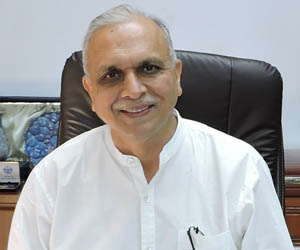By 2025, India aims to achieve a GDP of $5 trillion and a digital economy of $1 trillion. Since electronics underpin manufacturing, the demand for electronic products will rise to $400 billion by 2025. To meet the growing demand for electronic goods, the reliance on imports is likely to increase unless timely steps are taken to boost indigenous electronic manufacturing.
It may come as a surprise that the electronics goods imports bill is second only to the country’s oil import bill. According to the DGCIS figures import of electronic goods was US$ 39 billion in 2016, US$ 50 billion in FY 2017, $56 billion in FY 2018, US$ 54 billion in FY 2019, and US$ 33 billion in FY 2020. For comparison, India imported oil worth US$ 87.79 billion of petroleum products in FY 2020. The electronics goods imports were roughly 38% of the oil imports.
The government of India has taken several steps to boost electronics manufacturing in India, reduce import dependence and increase exports. The Make in India program, National Policy on Electronics ( 2019), Production Linked Incentive Scheme for the electronics sector, the Modified Special Incentives Scheme, Electronics Manufacturing Clusters (EMC) Scheme, and several other measures are designed to provide incentives for domestic manufacturing, localisation of electronics manufacturing, inviting foreign direct investment, boosting exports.
The National Policy on Electronics (NPE, 2019) aims to make India a global hub of electronic system design and manufacturing (ESDM). It estimates that about 10 million jobs will be created as a result of the implementation of NPE. The earlier version, the NPE 2012, had set a target of making India net zero in electronics imports by 2020. That did not happen. The NPE 2019 has set some ambitious targets: production of 1.0 billion mobile phones by 2025, valued at $ 190 billion including 600 million (approx. $ 110 billion) for export.
A lot of hope is being placed on the success of the Production Linked Incentive scheme for the electronics sector in boosting large-scale manufacturing of electronics products. The PLI scheme has been described as a game-changer by the industry. It provides for a 4% to 6% incentive to eligible companies on incremental sales (over base year i.e. 2019-20) of manufactured goods including mobile phones and specified electronic components for five years. The scheme is expected to bring an additional investment of Rs.11,000 crores and a total production of about Rs.11.5 lakh crores. Out of the total production, more than 60% is expected to be contributed by exports of the order of Rs.7 lakh crores.
India has emerged as a leading manufacturer of mobile phones in recent years, albeit more as an assembler. In FY 19-20, mobile phone manufacturing accounted for Rs 214,000 crores, followed by industrial electronics 92,200 crores, consumer electronics ₹ 81,000 crores, electronic components ₹ 75,800 crores, strategic electronics ₹ 22,800 crores, computer hardware ₹ 21,500 gross and any products ₹ 16,250 crores. It must however be mentioned that the domestic content addition is in the low technology category. A large number of high-tech components are imported. A comprehensive ecosystem of mobile manufacturing has yet to be established. India must focus on the indigenous manufacturing of components. A beginning has been made. Indian manufacturers are slowly getting integrated into global value chains.
The modified incentive scheme is having a positive impact. As of December 2020, 351 applications worth investment of Rs.1,02,681 crores were under consideration while 286 investment proposals of approximately Rs.79,951 crores had been approved.
India is also trying to increase the export of electronics items. As per DGCI&S data, India exported $ 8.8 billion in 2018-19 and $ 11.7 billion in 2019-20. The export growth has dipped due to covid but is expected to pick up.
Tremendous opportunities for increasing electronics manufacturing will come from consumer electronics, industrial sector, power electronics, renewable energy sector, automotive sector, telecom, work-from-home sector, digital infrastructure, strategic manufacturing, components and a series, medical electronics et cetera.
The emergence of new technologies like artificial intelligence, machine learning, Internet of things will create demand for new products. Now is the right time for India to step up its electronics hardware manufacturing capabilities and pair them with software progress to emerge as one of the world’s powerhouses in the electronics area. India cannot afford to miss the bus this time.
India is aiming to raise the share of industry in GDP to 25%. Several growth areas have been identified. There is also a stress on absorbing the 4IR technologies. The electronics sector is the foundation of every other manufacturing sector. Different sectors have different incentive schemes. New electronics policy must be harmonised properly with other growth sectors.
Unforntatley, India does not have much presence in the indigenous manufacturing of cyber security products. Cybersecurity is essential for telecom, computers and networks. The cybersecurity industry should be given high priority in the overall development of the indigenous electronics industry.
The global electronics trade is dominated by global value chains. India will have to find a way of integrating into global value chains to increase production and exports. The challenge before India is to make a quick transition to the manufacturing of high technology electronics items.
To meet the future needs in the electronics sector, high investment in the R&D sector is an absolute must. NPE 2019 seeks to create IPRs for the domestic as well as global markets. Indian manufacturers must be able to make original products and create demand for them.
Like China, India will need to achieve self-reliance in advanced electronics sectors. It is unfortunate that despite having taken an early lead in the eighties by setting up large scale integration and chip manufacturing facility in Mohali, India has languished in chip manufacturing. Every electronics product requires a chip of some sort. Although India has substantial capabilities in Chip design, we have no chip manufacturing capabilities. This situation must be addressed. Therein will lie the true success of the electronics policy.











Post new comment